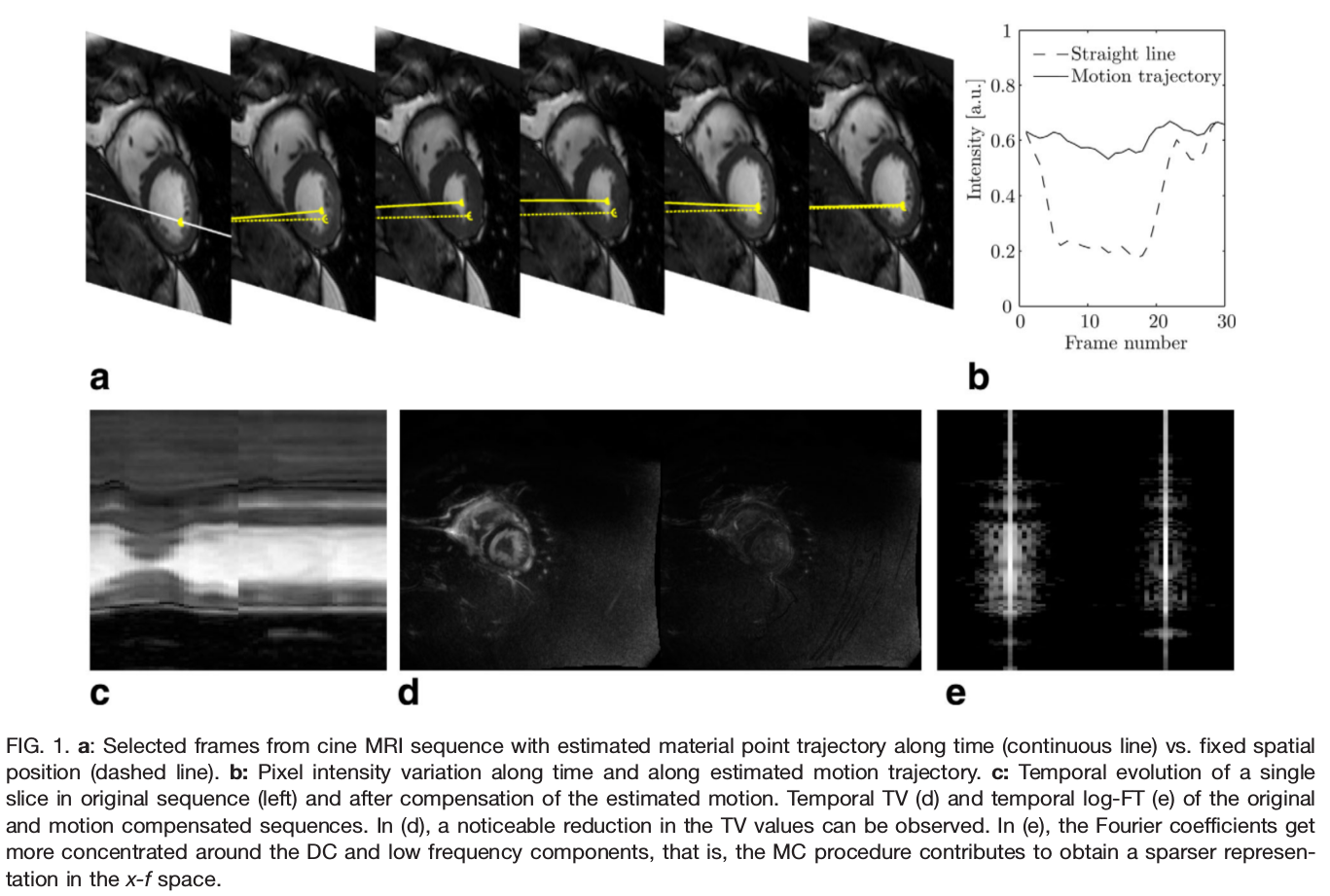New MRI reconstruction method published in MRM

A new MRI reconstruction method for highly undersampled dynamic data in the international journal Magnetic Resonance in Medicine: "Nonrigid groupwise registration for motion estimation and compensation in compressed sensing reconstruction of breath-hold cardiac cine MRI".
Purpose: Compressed sensing methods with motion estimation and compensation techniques have been proposed for the reconstruction of accelerated dynamic MRI. However, artifacts that naturally arise in compressed sensing reconstruction procedures hinder the estimation of motion from reconstructed images, especially at high acceleration factors. This work introduces a robust groupwise nonrigid motion estimation technique applied to the compressed sensing reconstruction of dynamic cardiac cine MRI sequences.
Theory and Methods: A spatio-temporal regularized, groupwise, nonrigid registration method based on a B-splines deformation model and a least squares metric is used to estimate and to compensate the movement of the heart in breath-hold cine acquisitions and to obtain a quasistatic sequence with highly sparse representation in temporally transformed domains.
Results: Short axis in vivo datasets are used for validation, both original multicoil as well as DICOM data. Fully sampled data were retrospectively undersampled with various acceleration factors and reconstructions were compared with the two well-known methods k-t FOCUSS and MASTeR. The proposed method achieves higher signal to error ratio and structure similarity index for medium to high acceleration factors.
Conclusions: Reconstruction methods based on groupwise registration show higher quality reconstructions for cardiac cine images than the pairwise counterparts tested.
DOI: 10.1002/mrm.25733
